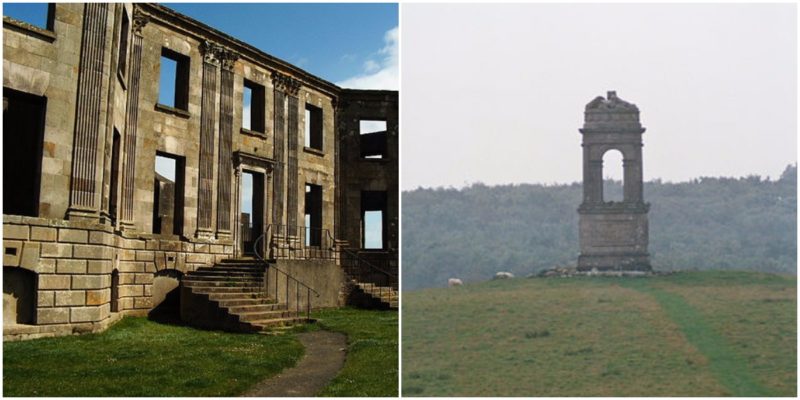There are residences around the globe which mirror the artistic view of their owners and their devoted passion for fine arts. Numerous mansions, palaces, and castles literally look like small museums.
Generally, the construction of such houses costs a lot of money and only a few wealthy people could afford a mini-museum in the living room. Usually, this kind of nonordinary houses throughout the years are modified into real museums or the precious artwork from them is transferred into art institutions or in already established museums. Unfortunately, because of various reasons, houses which once shone in a glorious light and were filled with many artworks now stand empty, abandoned and ruined.
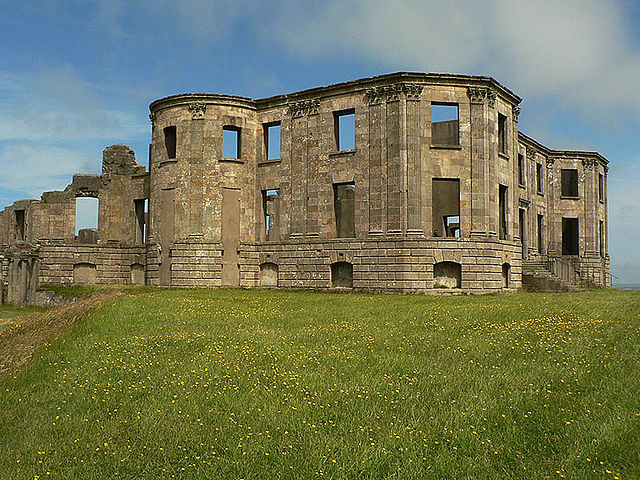
Today, Downhill House is only a picturesque remainder of one magnificent past. The whole property is synthesized with the breathtaking environment, but it is far from the days when it was full of life. Although partially in ruins, the structures at the Downhill property still radiate with mystical beauty.
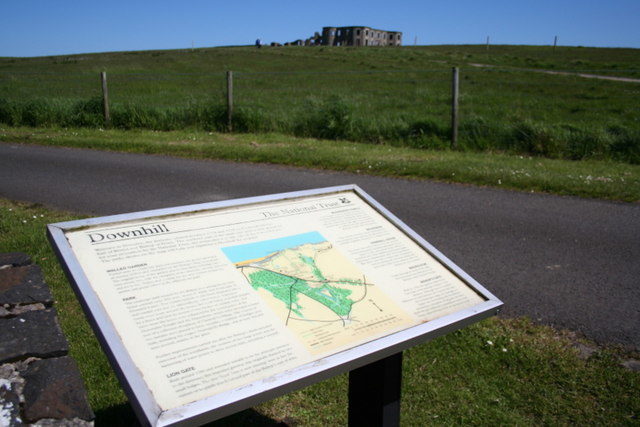
Local oral legend says that the owner, Frederick Hervey (known as Earl Bishop), was the designer of his own home. But, even though he was quite eccentric man and had high developed aesthetic sense, the architects of Downhill House were professionals. The main architect of the original structure was Michael Shanahan and the decorative carvings on the stone were made by James McBlain. Italian plaster workers were hired too, led by the Milanese architect Placido Columbani. However Earl Bishop definitely had impact on them and they materialized his wishes in reality.
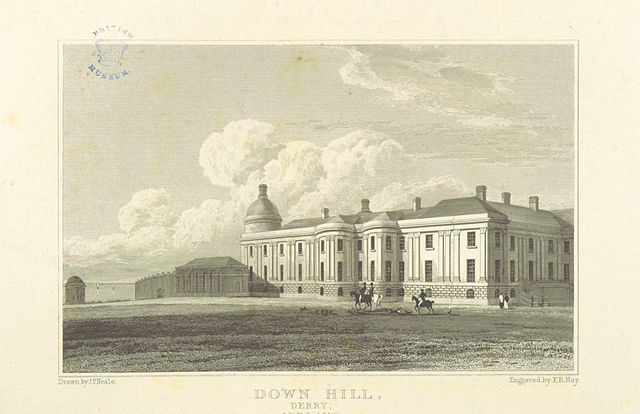
During his life he became the Royal Chaplain of the King George III. Actually he was the 4th Earl of Bristol and Church of Ireland Bishop of Derry. But his wealthy days began when he inherited a large amount of money and land from his brothers. After that, Earl Bishop traveled a lot across Europe and became a philanthropist and an art collector.
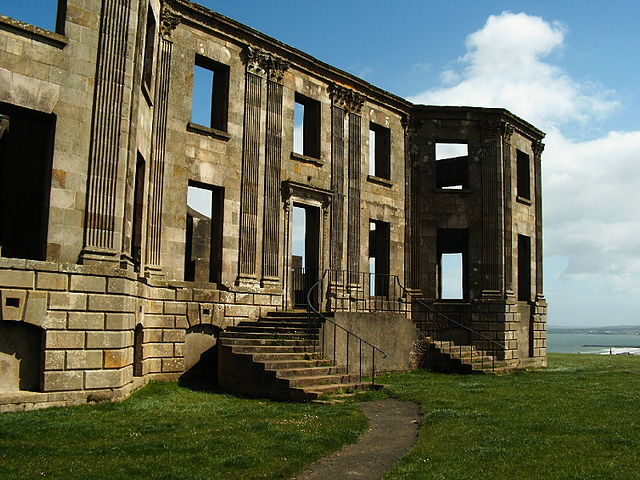
He helped to be built many roads in Ireland, but Downhill House was the first edifice that he built there. Even years before he has been nominated as a bishop in Ireland, he fell in love with the landscape, especially with the coast of volcanic origin in the northern part of Ireland. The mansion was built at the end of the 18th century. Earl Bishop was especially passionate about Renaissance art, and the house was built as an Italian villa, and at the beginning he used it as a summer house. He collected many paintings from Raphael, Tintoretto, Caravaggio, Titian, and Rembrandt, which decorated the rich interior. The mansion was enlarged, to fit his ever-growing art collection.
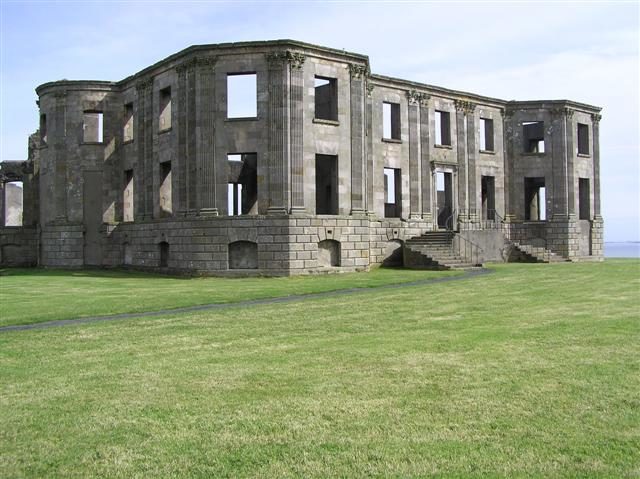
At first it was only a simple three story building built from local basalt. Later at the back were added two long wings, and a few outbuildings. The first floor was used as basement and the second and the third floor were for pleasure. The house was damaged by fire in 1851. The exterior didn’t suffer a lot, but the interior was devastated. The library was destroyed entirely. All of the frescoes and more than 20 original sculptures were ruined completely. Most of the precious paintings were saved, however several of them became ashes, like the Raphael’s Boar Hunt. In the 1870s the house was completely reconstructed. It is interesting that the facade of granite ashlar still stands today with the Corinthian columns as decoration.
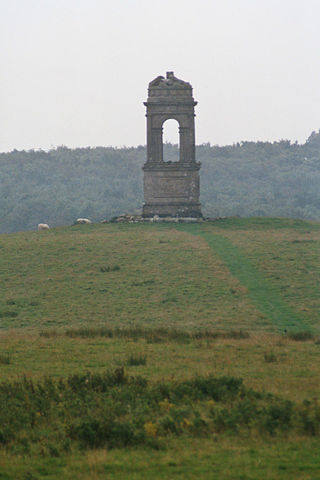
His cousin Henry Bruce was the custodian of the property while Earl Bishop was out of Ireland. In 1803 Earl Bishop died, and after his death, the property was inherited by his cousin. He became a baronet in 1804, and the entire property remained in the Bruce family until 1948, although they rarely visited it since 1920. The last permanent occupants of the house and the property were the officers of RAF, because during WWII the site was requisitioned by them. After the war, the Bruce family sold the whole property. The new owner deliberately demolished the interior of the house. He removed the roof and sold the precious furniture at auction. The remaining parts started to fall apart.
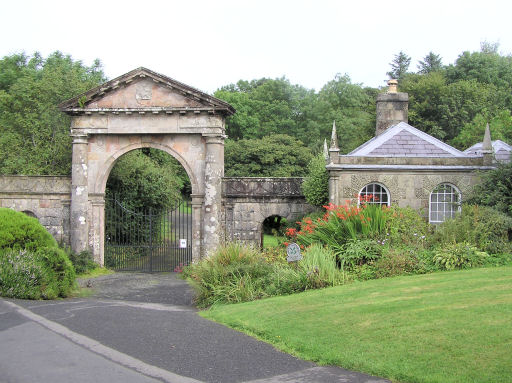
Not far from the mansion, at the edge of the cliff, is located the Mussenden temple. There is a legend that while was at Rome, Earl Bishop fell in love with the Roman temple of Vesta. He wanted to buy it and to move the whole building into Ireland, but this crazy idea wasn’t allowed by the Pope. However, he said to his architects to built exactly the same building as the Roman temple. His temple was built in memory of his relative, Mrs. Frideswide Mussenden, which was Henry Bruce’s sister. The domed rotunda encircled with Corinthian columns was used as a library. Although it is constantly exposed on the strong sea wind, it is in a good shape.
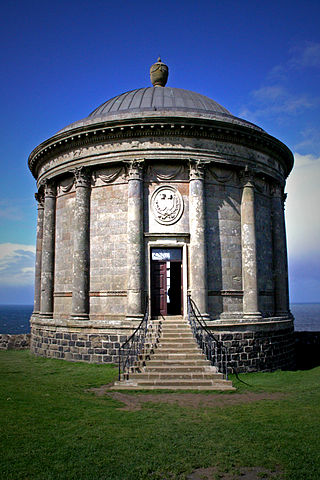
At the entrance of the property is the Bishop’s Gate, which was erected on the same spot of the ruined Lion’s Gate. The roofless mansion is in the middle of the vast property. Around the house there are walled gardens, a summer house (a belvedere) built specially for Earl Bishop’s daughter and the mausoleum of his brother. The site is an attraction, and it is visited by many tourists.
